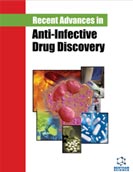Abstract
The development of resistance against antibiotics in microorganisms has led
to the search for alternatives that can effectively kill microbes and will have a lesser
probability of the generation of resistance. In this regard, nanomaterials have emerged
as protagonists demonstrating efficient antibacterial activities against drug-resistant
strains. Amongst nanomaterials, 2D nanosheets have attracted attention as an
antibacterial agent due to their sheet-like features, having sharp edges and corners
which can pierce through bacterial membranes, subsequently leading to membrane
damage. The present chapter discusses the antibacterial potential of one such 2D
material, transition metal dichalcogenides, specifically MoS2
nanosheets and their
composites. A brief discussion about the synthesis of MoS2
nanosheets is presented,
and a detailed overview of its application as an antibacterial agent is illustrated. The
mechanism of action of antibacterial activity of 2D MoS2
nanosheets is discussed,
which shows that these nanosheets can cause bacterial cell death through membrane
damage and depolarization, metabolic inactivation and generation of reactive oxygen
species (ROS). Further, the photothermal property and the intrinsic peroxidase-like
activity in certain conditions can also show antibacterial activity, which is summarized
in the chapter along with the biocompatibility evaluation.






















